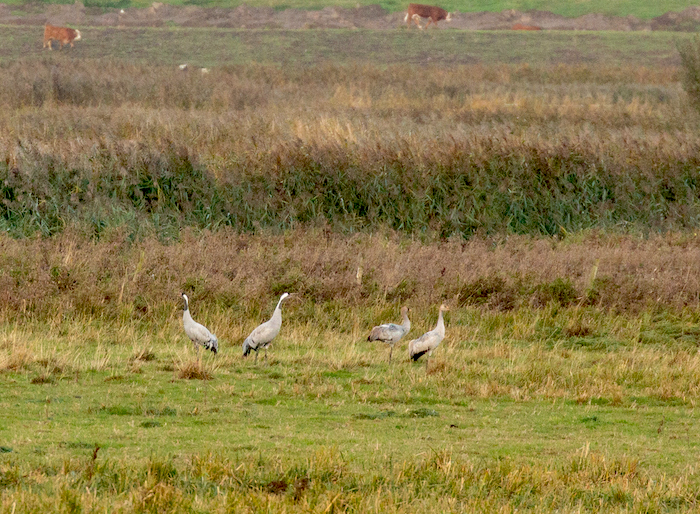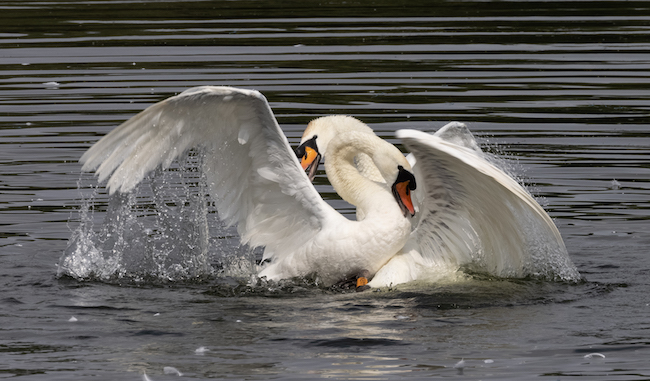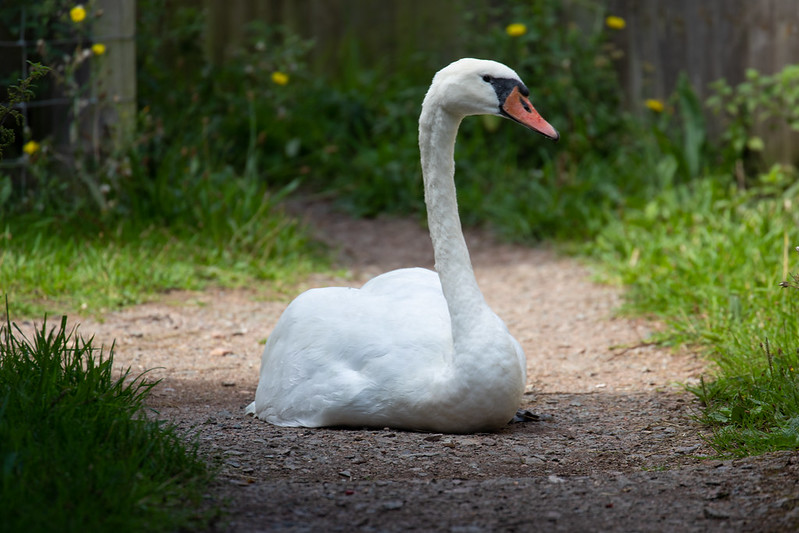- Home
- Cambridgeshire walks
- Winter Sunrise
- Common Crane Uk
Spotting the Common Crane, UK Sightings at RSPB Nene Washes
Few sounds in the British countryside are as evocative or wild as the bugling call of the Common Crane (Grus grus).
As the UK's tallest bird, seeing these elegant giants is always a special experience, made more so by their remarkable comeback story.
Once extinct as a breeding bird here for nearly 400 years, the Common Crane UK population is slowly recovering thanks to dedicated conservation efforts and habitat restoration, particularly in key wetland areas like the Cambridgeshire Fens.
RSPB Nene Washes has become an important site for observing these magnificent birds, and I've been lucky enough to have some unforgettable encounters there on autumn visits.
An Unexpected Family Encounter
My first Crane sighting here was entirely unexpected. We'd visited Nene Washes late one October afternoon in 2018.
Conditions weren't typically 'birdy' – the fields were dry after a long summer, meaning few of the usual wintering wildfowl had arrived yet.
After walking quite some way with little activity, my husband suddenly asked, "What is that large grey bird with a white head over there?" Knowing Cranes had occasionally been reported locally, my pulse quickened!
Training my lens on the distant field, there they were – four Common Cranes!
It was clearly a family group: two impressive adults and two distinctively smaller, buff-headed juveniles from that year's breeding season.
It was absolutely wonderful to see them, confirming their presence in the area.
They were unfortunately too far away for anything more than record shots (see photo below), but just watching them move gracefully and hearing their unique, prehistoric-sounding calls echo across the washes was completely enthralling.
We stayed watching until my husband's patience eventually wore thin!
 My first Common Crane sighting at Nene Washes - a family group (2 adults, 2 juveniles) seen in October 2018. Distant, but thrilling!
My first Common Crane sighting at Nene Washes - a family group (2 adults, 2 juveniles) seen in October 2018. Distant, but thrilling!Witnessing Growing Numbers
Returning on almost the same date two years later, in late October 2020, highlighted the positive progress for Cranes in the region.
This time, instead of a single family, we witnessed the incredible spectacle of around 60 Common Cranes flying in elegant skeins overhead.
Capturing this large group against the evening sky was a photographic challenge, but seeing such numbers was a fantastic and hopeful sign of their establishment at Nene Washes.
 Large flock of Common Cranes flying over Nene Washes
Large flock of Common Cranes flying over Nene WashesThe Common Crane UK Comeback
Seeing these birds feels extra special when you know their history in Britain.
Common Cranes actually disappeared from the UK landscape as a breeding species around the 1600s, primarily due to being hunted and the widespread drainage of the vast wetland and marshland habitats they depend on.
For centuries, their evocative calls were absent.
Their gradual return began incredibly slowly in 1979 when a few wild birds naturally recolonised part of the Norfolk Broads.
Since then, thanks to the tireless work of conservation organisations, targeted reintroduction projects (like the Great Crane Project which started in Somerset), and crucial large-scale wetland habitat restoration in areas like the Fens, the Common Crane UK population has made a heartening recovery.
Recent surveys (conducted around 2023) now estimate the national population exceeds 250 birds, including over 80 breeding pairs – a genuine conservation success story that is still unfolding!
Seeing Cranes at Nene Washes

RSPB Nene Washes, particularly the areas viewable from the public footpaths near the Eldernell access point (off the A605 near Whittlesey), remains a key location to try and see Common Cranes in the UK.
Autumn and winter often provide the best chances as birds gather in flocks, sometimes feeding in nearby fields or flying to roost sites.
Be prepared for potentially distant views – binoculars or a spotting scope are highly recommended for the best experience!
As always when observing wildlife, especially sensitive species like Cranes, please keep a respectful distance and stick to designated public paths to avoid disturbance.
Visiting the washes offers a wonderful opportunity to witness part of this inspiring wildlife recovery story firsthand.

About the Author
Carol is a wildlife photographer and nature writer based in the East of England, with a passion for peaceful walks, patient observation, and capturing life’s quiet wonders.
Through her lens and words, she shares the stories of the natural world — from bluebells and butterflies to birds like the great crested grebe.
Get closer to UK nature
Subscribe to Wild Lens!
Want to discover more hidden walks and wildlife moments?
I’d love to share my latest nature finds, photo tips, and peaceful walk recommendations with you.
💌 Join my newsletter Wild Lens—it’s free, occasional, and always rooted in a love of the natural world.
Subscribe below and come exploring with me.






